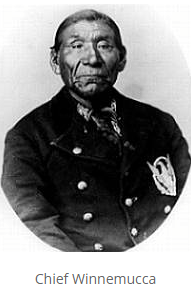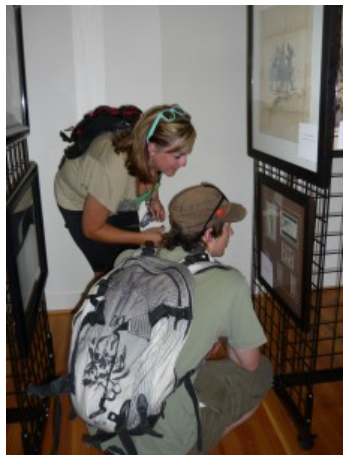
Chief Winnemucca
Chief Winnemucca, also called Poito or One Moccasin (ca. 1820–1882), was an important chief of the Northern Paiute at the time of the Paiute War of 1860. He is primarily known through the writings of his daughter, Sarah Winnemucca. His birth date is unknown, but was probably around 1820.
Winnemucca has been translated as The Giver. This name is part-English and part-Paiute His role in Northern Paiute politics is difficult to determine, and somewhat controversial. Sarah Winnemucca stated that he was the chief of all the Northern Paiute, and due in large part to her role as a translator this viewpoint was shared by contemporary whites. Modern historians and ethnologists view him more as a “first among equals”, with considerable influence over the bands in the Pyramid Lake region.
Unlike his father Truckee, Winnemucca was distrustful of white settlers, and he was a leading proponent of the Pyramid Lake War of 1860. After that war his influence decreased considerably and he appears to have had little control over the events at the Malheur Reservation in the lead up to the Bannock War of 1878.
Winnemucca Lake and the city of Winnemucca, Nevada are named after Winnemucca. His son Natchez and nephew Numaga were known to whites as Little Winnemucca and Young Winnemucca, respectively.
The San Francisco Chronicle reported that Winnemucca died in October 1882 at Coppersmith Station, Nevada. It further reported that his death was attributed to his being bewitched by his young wife, who was then stoned to death along with their three-year-old child.
Powered by Ez2dowebsites.com




